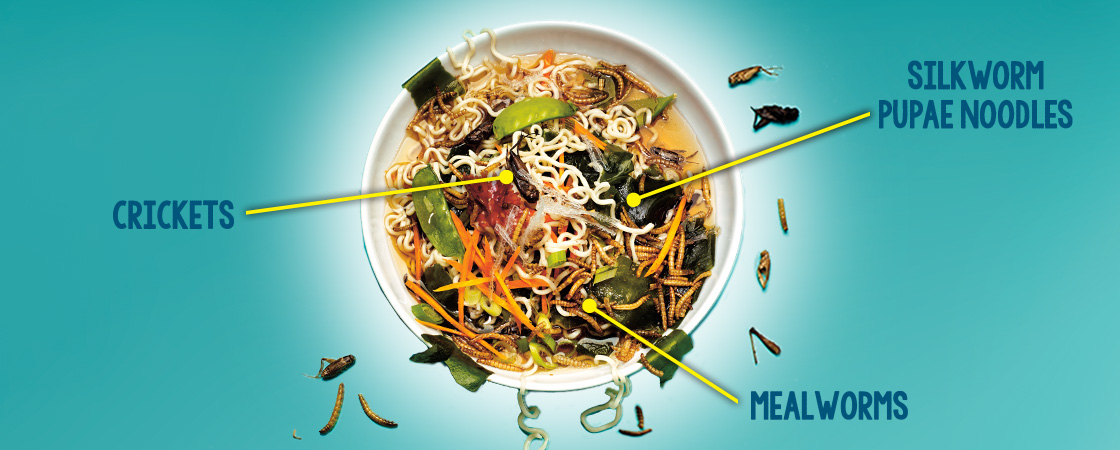In your hand, you hold a piece of toast topped with something that looks like beans. You inhale the pleasant buttery scent. Your stomach starts to rumble in anticipation. You chomp down.
Instantly, the crispy morsels explode in your mouth, releasing their flavorful, creamy insides. The taste is distinctly nutty.
Congratulations! You have just swallowed a bunch of mealworms.
Now hold on. Don’t be grossed out. Mealworms can be quite scrumptious. Eating them—or other insects, like crickets, caterpillars, or bees—might sound strange to you, but it’s quite ordinary in many parts of the world. Some people grill or fry these bugs, while others prefer them live.
Creepy-crawly critters aren’t loved just for their delicious flavors, though. They’re also highly nutritious. Plus, studies show that eating them is easy on the environment.
But can entomophagy—that is, bug eating—ever become popular in America?
You’re holding a piece of toast. It’s topped with something that looks like beans. It has a pleasant buttery scent. Your stomach rumbles in anticipation. You chomp down.
The crispy morsels explode in your mouth, releasing their creamy insides. The taste is distinctly nutty.
Congratulations! You just ate a bunch of mealworms.
Now hold on. Don’t be grossed out. Mealworms can be scrumptious. Eating them might sound strange to you. Eating other insects—like crickets, caterpillars, or bees—might also sound strange. But it’s common in many parts of the world. Some people grill or fry these bugs, while others prefer them live. These critters are delicious and highly nutritious. Plus, studies show that eating them helps the environment.
But can entomophagy—that is, bug eating—ever become popular in America?



